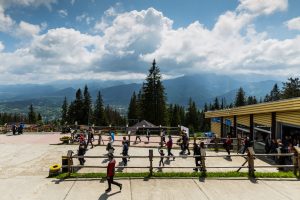ABOUT KRAKÓW
Kraków
Cracow (Polish: Kraków [Kra:kuff]) is the second largest city in Poland with a population of over 800,000 inhabitants. It is one of the most important cultural, economic and academic sites of Poland. In the course of over thousand years of history, it has been an active intellectual hub and important religious and political centre. In the first centuries of Polish statehood, Krakow was the capital city, the seat of the kings of the Piast dynasty and the Jagiellonian dynasty. The last of the Piasts, Casimir the Great, founded in 1364 the Cracow Academy. The Academy declined after the death of its founder but shortly after in 1400 it was revived by King Ladislaus Jagiello and his wife Queen Jadwiga of Anjou (later St Jadwiga of Poland). Named after the ruling dynasty, Jagiellonian University developed in the 15th century into an institution with a high standard of learning.
In the epoch of Renaissance, Krakow as the capital of Poland was modernized and enlarged. With the end of the Jagiellonian dynasty and the era of elected kings, Krakow's role diminished, especially when one of the elected rulers, Swedish king Gustavus Vasa, moved the capital from Krakow to Warsaw, a site located much closer to his homeland.
Following the partition of Poland (1795-1918) Krakow belonged to the Austrian empire. In the last decades of the 19th century, due to political reforms introduced by the Habsburgs, Krakow enjoyed a relative autonomy and turned into an important intellectual, scientific and cultural centre of the Austro-Hungarian empire.
We strongly recommend visiting the web page „Magiczny Kraków" (Magic Cracow) in English, as well as other languages, for up-to-date and substantial informatino on what´s up in the town.
After Poland regained its independence in 1918, Krakow continued to be a strong intellectual and scientific centre, and Jagiellonian University became a renown academic institution, particularly strong in the fields of law, history, philosophy, mathematics, biology, linguistics.
The outbreak of World War II had dramatic consequences for the city and its largest university. Although Krakow was not as destroyed as Warsaw, the population suffered greatly from the German occupation. Krakow's Jews, who had been settled in the quarter of Kazimierz since the end of the 14th century, fell victims of the Nazi invasion. They were forcibly herded into a ghetto, the site of horrendous atrocities, and the majority were transported to Auschwitz. Jagiellonian University was closed by the German occupiers who in November 1939 made a bloody pacification arresting 183 university professors and lecturers and putting them in a concentration camp in Sachsenhausen where many of them lost their lives. Starting in 1942, Jagiellonian University began to teach clandestinely.
Following the end of war, Krakow strongly opposed the growing Communist influence. After consolidating their power, the ruling Communist party decided to build a giant steel plant to give an industrial boost to the region but also to counterbalance the "Conservative" Krakow by the "Proletarian" class working in the Lenin steelworks. Nowadays the steelworks and the adjacent district Howa Huta are one of tourist attractions.
1. Auschwitz-Birkenau Museum
If you would like to participate on any of these tours, please book it by filling this online form.
Shall you have any questions, please contact Agnieszka Wojtczak (awojtczak@seekrakow.com) or Kinga Zawilińska (kzawilinska@seekrakow.com) from SeeKrakow.
Description
In 1939, after the invasion of Poland by Nazi Germany and the loss of the defensive war by the Polish army, all the western regions of Poland, including the town of Oświęcim, were annexed by the Third Reich. The town was renamed as Auschwitz and the same name was given to a complex of concentration and extermination camps that were built there. The history of the Auschwitz concentration camp can be divided into two primary periods: the years 1940-1942, when it functioned as a concentration camp and a place of slow extermination, and the years 1942-1944, when it was transformed into the biggest centre of immediate mass extermination of Jews, who had been transported into the camp under the policy conducted by the Third Reich that assumed the extermination of the entire Jewish population in Europe. It is estimated that over 1.1 million women, men and children died in the camp during these four years. Around 90% of casualties were Jews brought there from all the European countries that were occupied by Germany or situated in the zone of German influence. Most of them were put to death in gas chambers and others were victims of brutal punishments, medical experiments or inhumane living conditions in the camp. A visit to the Auschwitz Museum allows you to learn about the cruel fate of these people and to broaden your historical knowledge of the Holocaust.
A trip to the Auschwitz-Birkenau Museum is a specific encounter with the history of Nazi cruelty and the fate of the Holocaust victims, which is the saddest in the history of humanity. During the tour, you will see a permanent exhibition, original camp buildings in the main part of the complex (Auschwitz) and the most important sites in Brzezinka (Birkenau). Konzentrationslager (KL) Auschwitz was established as a result of Nazi policy conducted in the territory of occupies Poland in order to destroy the Polish state by means of mass deportations and systematic extermination. The KL Auschwitz camp was the largest Nazi concentration camp and extermination centre, so we ask that you to maintain due respect to the memory of the victims. During the tour, the group will be accompanied by an experienced museum guide who will tell tourists step by step about the sad fate of the camp victims. The entire sightseeing tour, including travel, will last around 7-8 hours – the visit to the first part of the Museum will take 2 hours, and the visit to Birkenau will take around 1 hour. Please remember that the programme of the trip does not include any lunch break. Because the camp is situated on an extensive open space, please remember to take clothes that will give you adequate protection against the prevailing weather conditions.
Important information
- Tour duration: 7- 8 hours
- For safety reasons, before entering the museum, every participant in required to undergo a search and luggage inspection.
- The Auschwitz-Birkenau Museum allows you to bring a hand luggage item with maximum dimensions of 30 ˣ 20 ˣ 10 centimetres (11.8 ˣ 7.8 ˣ 3.9 inches). In case of larger luggage, please contact us before the tour.
- Due to the nature of the tour (visiting the site of a former extermination camp), the participants are requested to respect the memory of the dead by dressing and behaving appropriately.
- Auschwitz-Birkenau is an open-air museum, where the weather can change rapidly. Therefore, the participants are required to bring warm, waterproof clothing (e.g. sweaters, jackets, umbrellas) and sun-protective items (e.g. hats, caps, sunglasses).
- The participants will be walking on a ground which becomes muddy in case it rains. Therefore, they should wear comfortable, waterproof shoes.
- Only pay toilets are available around the museum.
Price: 165 PLN/person
The price includes:
- English-speaking tour leader assistance (one tour leader per bus)
- transportation by van, minibus or coach
- guided tour in Auschwitz I i Auschwitz II-Birkenau (duration: 3-3,5 h)
- tickets
- headphones
- service of official educator of the Auschwitz-Birkenau Museum (max. 30 participants per group)
Minimum number of participants:
10
Pick-up place and time
Wielopole 2, 8:15 AM
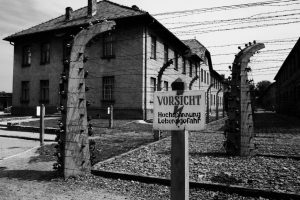
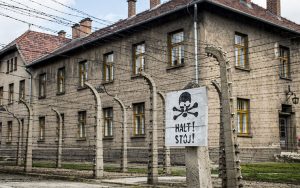
2. Wieliczka Salt Mine
Description
Full of unique beauty and active continuously since the Middle Ages – the historic Wieliczka Salt Mine is visited by tourists every day, showing the most amazing works of art sculpted throughout the many centuries of laborious miners’ work. The underground Wieliczka Salt Mine boasts kilometres of walkways and ramps, magnificent chambers, lakes and breathtaking salt statues. Modern technology can also be come across along the route to educate those eager to learn more about the Mine. The smell of salt wafting through the air, therapeutic microclimate, impressive chambers, wooden structures and perfection to the tiniest detail – the charms of the Tourist Route attract and enrapture over one million visitors travelling every year from different parts of the world. Many people are taken aback by how huge the Mine is. It is hard to imagine – the Tourist Route involves almost 800 steps to climb and over 2 kilometres of meandering corridors. The tour lasts 2 hours, although this part of the Mine makes up for only 1% of the entire underground world! Hence, the tourists are guided by an experienced museum guide – we advise you to follow the group closely and keep an eye on the guide at all times!
The Wieliczka Salt Mine was one of the first among 12 sites from all around the world to be designated a UNESCO World Heritage Site. It is one of the most frequently visited tourist sites in the world!
The scenic Tourist Route is the pearl of the treasure of the Lesser Poland region – the Wieliczka Salt Mine. The tourists will reach the depth of 135 meters and learn about the ethos of hard work performed by the generations of miners facing the forces of nature. A perfect example of the mining efforts is the Michałowice chamber, impressing the visitors with its 36-metre tall wooden structure lit by a 6-metre tall and 3-metre wide chandelier made of salt crystals. However, this is only a fraction of breathtaking sights the trip participants will see along the route. The tourists will also listen to Frédéric Chopin’s étude in the famous Weimar chamber upon a saline lake, learn about the legend of Duchess Kinga who brought the treasure of salt to Poland, and reach the heart of the Mine – St. Kinga’s Chapel embodying the artistic and mining efforts. Visitors who wish to use their photo cameras during the route are requested to purchase a special permit, available at sales point along the tour route.
The tour starts at the Danilowicz Shaft. Here, the visitors will meet their guide, who will tell them everything they want to know about the history and secrets of the Mine. The tourists will descend the 380 stairs to the first level of the Mine situated 64 metres underground. The entire route consists of some 800 stairs.
Important information
- Tour duration: 4-5 hours
- For safety reasons, before entering the mine, every participant in required to undergo a search and luggage inspection.
- The “Wieliczka” Salt Mine allows you to bring a hand luggage item with maximum dimensions of 35 ˣ 20 ˣ 20 centimetres (13.7 ˣ 7.8 ˣ 7.8 inches).
- The “Wieliczka” Salt Mine is located 135 metres (443 feet) underground, where the air temperature is approx. 14–16 degrees Celsius (57–61 degrees Fahrenheit). Therefore, the participants should bring warm clothes (e.g. sweaters, jackets).
- This is partly a walking tour, so the participants should wear comfortable sports shoes.
- The mine tour begins with walking down 800 stairs underground and ends with a lift ride.
Price: 160 PLN/person
The price includes:
- English-speaking tour leader assistance (one tour leader per bus)
- transportation by van, minibus or coach
- guided tour in the Wieliczka Salt Mine (duration: 2-2,5 h)
- tickets
- professional guide service in the Wieliczka Salt Mine (max. 40 participants per group)
Minimum number of participants:
15
Pick-up place and time
Wielopole 2, 9:10 AM
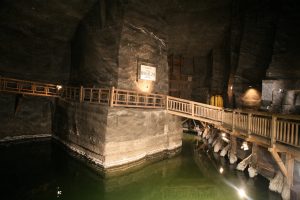
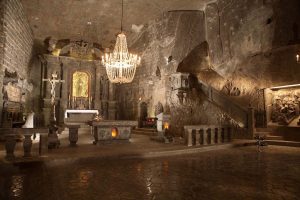

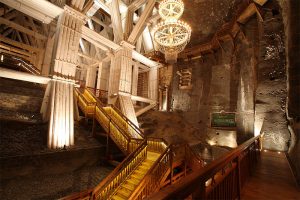
3. Kraków sightseeing (The Old Town and the Jewish Quarter)
Description
It is a four-hour walking tour created for those tourists who want to discover the richest history of the former capital of Poland. The tour, full of anecdotes, legends and touching stories, will enrich tourists’ knowledge with interesting bits and pieces connected with Kraków and its residents at that time. The tour starts in front the famous Floriańska Gate located in the Old Town. We will take a walk along the Royal Route leading through the most recognisable and picturesque streets of the city. You will also listen to the trumpet call in the square. The culmination of the visit in the Old Town is a charming observation deck in the Wawel Hill with a panoramic view of the city. Next you will walk in the direction of the Jewish district – Kazimierz – which is characterised by the thriving atmosphere on the one hand and the suffering connected with the cruel times of the Nazi occupation and Holocaust on the other hand. Here you will hear the story of Jewish people who settled here at some point creating “a city within a city”. The group will visit such places as the yard where scenes from Steven Spielberg’s “Schindler’s List” were shot. They will also hear a historical overview and legends about the origins of three Jewish synagogues.
Important information
- 1.Tour duration: 4 hours
- This is a walking tour, so the participants should wear comfortable sports shoes.
- Depending on the weather in Kraków, the participants should bring warm, waterproof clothing (e.g. sweaters, jackets, umbrellas) and sun-protective items (e.g. hats, caps, sunglasses).
- The tour price is exclusive of entrance fees to the sites en route. If you wish to visit selected monuments, please contact us.
Price: 75 PLN/person
The price includes:
- licensed professional guide service (4h; max. 30 participants per guide)
Minimum number of participants:
5
Pick-up place and time
St. Florian’s Gate, 9.30 AM
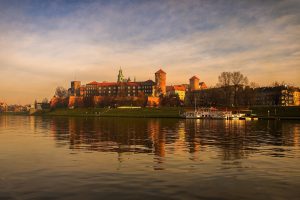
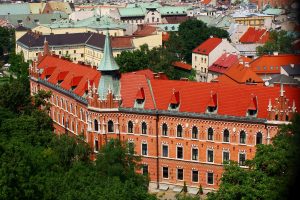
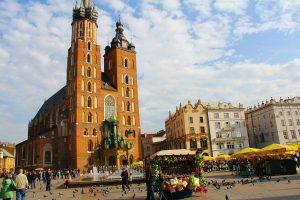
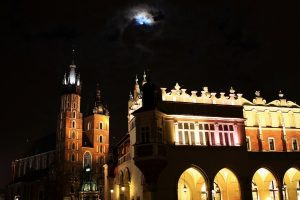
4. Zakopane tour
Description
We invite you to visit Zakopane – the winter capital of Poland located at the foot of the Tatra Mountains, with breathtaking views and picturesque natural landscapes that are enchanting not only in winter but at every time of the year! Captivating scenery, characteristic folk culture, highlander-style cuisine, numerous tourist trails and ski routes – all of this contributes to the richness of Zakopane, which is the most popular mountain tourist resort in Poland. The trip will start with a visit to a shepherd’s hut, where tourists will taste the traditional smoked cheese called ‘oscypek’. Then the group will visit the Regional Museum which will be an opportunity to have a look at Zakopane art. After the visit to the Museum, tourists will get into a funicular that will take them straight to the top of Mount Gubałówka to experience an imposing view of the granite and limestone peaks of the Tatras. During their ‘spare time’ tourist can stay on Mount Gubałówka or ride down to the huge regional market square and eat dinner in one of the restaurants offering local delicacies.
Important information
- Tour duration: 9-10 hours
- The city of Zakopane is located at the foot of the Tatra Mountains, where the air temperature is usually lower than in Kraków, and the weather can change rapidly. Therefore, the participants are required to bring warm, waterproof clothing (e.g. sweaters, jackets, umbrellas) and sun-protective items (e.g. hats, caps, sunglasses).
- This is partly a walking tour, so the participants should wear comfortable sports shoes.
- The tour includes a tasting of products containing lactose.
Price: 190 PLN/person
The price includes:
- English-speaking tour leader assistance (one tour leader per bus)
- transportation by van, minibus or coach
- oscypek cheese tasting
- tickets to the Gubalowka Funicular
- tickets to a regional museu
Minimum number of participants:
10
Pick-up place and place
Wielopole 2, 8.00 AM

